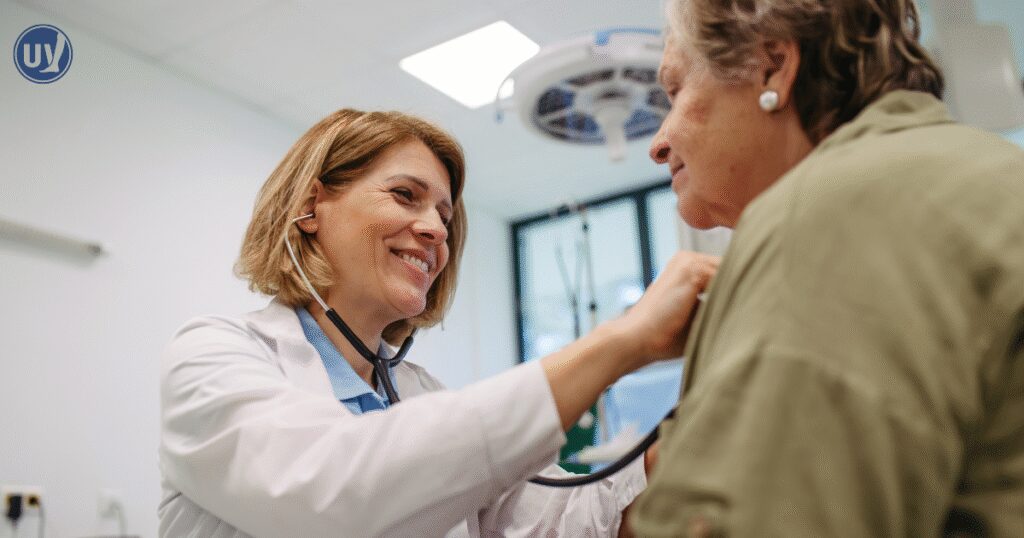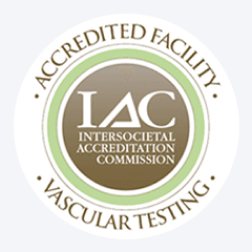What is Peripheral Artery Disease and Why it Matters
Peripheral artery disease, or PAD, is a common circulatory condition where narrowed arteries reduce blood flow to the limbs. PAD often causes leg pain during walking, known as claudication.
While discomfort in the legs is a common symptom, PAD can also signal more serious health concerns. Reduced blood flow to the heart and brain increases the risk of heart attack, stroke, and other cardiovascular issues. Understanding PAD is essential for recognizing early signs and seeking timely treatment.
Common Symptoms of Peripheral Artery Disease
Symptoms of PAD can vary in severity and sometimes overlap with other conditions, making proper evaluation important. Common signs include:
- Leg pain, cramping, or weakness when walking
- Numbness or coldness in the legs or feet
- Sores or wounds on the legs that do not heal
- Skin color changes in the lower extremities
- Reduced mobility or difficulty performing daily activities
Recognizing these symptoms early and consulting a specialist can prevent complications and help manage PAD effectively.
Causes and Risk Factors of PAD
PAD is most often caused by atherosclerosis, a condition in which fatty deposits build up on artery walls. Over time, these deposits narrow arteries and reduce blood flow.
Risk factors for developing PAD include:
- High cholesterol and unhealthy lipid levels
- Diabetes
- High blood pressure
- Smoking
- Sedentary lifestyle
- Family history of vascular disease
Identifying and addressing these risk factors can slow disease progression and support better circulation.
How Peripheral Artery Disease is Diagnosed
A proper diagnosis of PAD requires evaluation by a trained specialist. Common tests include:
- Ankle-brachial index (ABI) to measure blood pressure differences between arms and legs
- Ultrasound imaging to assess blood flow and detect blockages
- CT or MRI angiography for a detailed view of artery structure
Accurate diagnosis allows healthcare providers to develop a personalized treatment plan that addresses the severity of PAD and any underlying conditions.
Non-Surgical Treatment Options for PAD
Balloon Angioplasty and Stenting for PAD
Balloon angioplasty is a minimally invasive procedure where a tiny balloon is threaded into a narrowed artery and inflated to widen it. In many cases, a stent, a small wire mesh tube, is placed to keep the artery open. This procedure can restore blood flow immediately, providing relief from leg pain and reducing the risk of complications. Recovery is typically faster than with traditional surgery, making balloon angioplasty and stenting a preferred treatment option for many patients.
Atherectomy for Complex Artery Blockages
Atherectomy uses specialized catheters to remove plaque from arteries. This procedure is particularly effective for patients with complex or heavily calcified blockages. Various devices, including lasers and rotating shavers, allow precise plaque removal, preserving artery integrity. Atherectomy offers an alternative when traditional methods may not be effective and can improve long-term outcomes by restoring proper blood flow.
Drug-Coated Balloons for Recurring Blockages
Drug-coated balloons deliver medication directly to the artery wall during the procedure. The medication prevents scar tissue formation and reduces the chance of the artery narrowing again. This approach is especially useful for patients with recurring blockages. The localized delivery minimizes systemic side effects while improving the durability of treatment results.

Lifestyle Changes to Improve Circulation and Manage PAD
Non-surgical treatments are most effective when combined with lifestyle modifications. Key strategies include:
- Heart-healthy diet: Focus on fruits, vegetables, whole grains, and lean proteins. Limit saturated fats, cholesterol, and sodium to support better blood flow.
- Regular exercise: Walking and low-impact activities strengthen leg muscles and improve circulation. Structured exercise programs guided by healthcare professionals can optimize benefits.
- Maintain healthy weight: Reducing excess weight lowers pressure on arteries and improves overall cardiovascular health.
These lifestyle changes complement medical treatments and help slow disease progression.
The Impact of Smoking on PAD and How to Quit
Smoking is a major contributor to PAD and can accelerate disease progression. Quitting smoking improves circulation, reduces symptoms, and enhances the effectiveness of treatments. Support from healthcare providers, including counseling, medications, and structured cessation programs, increases the likelihood of successfully quitting. Patients who stop smoking often experience significant improvements in vascular health and long-term outcomes.
The Importance of Regular Check-Ups for PAD
Routine medical check-ups are essential for tracking PAD progression and adjusting treatment plans. During these visits, healthcare providers can evaluate symptoms, review test results, and modify treatment strategies as needed. Regular check-ups empower patients to actively participate in their care and address any concerns promptly, reducing the risk of complications.
Combining Non-Surgical Treatments, Lifestyle, and Medications
A comprehensive approach to PAD includes non-surgical procedures, lifestyle modifications, and medications. This integrated strategy improves blood flow, reduces symptoms, and enhances overall quality of life. Patients who actively engage in their care and follow personalized plans often see better results and greater long-term success.
Find a UVVC Clinic Near You for Expert Care
If you are experiencing symptoms of PAD or want to learn more about non-surgical treatment options, the specialists at United Vein and Vascular Centers are here to help. Our team provides personalized care, guiding you through the latest procedures and helping you develop a plan to improve circulation and quality of life. Take control of your vascular health today and find a UVVC clinic near you to schedule a consultation.
Frequently Asked Questions
Early signs of PAD can include leg pain or cramping when walking, numbness, coldness in the feet or legs, slow-healing sores, and changes in skin color. Early detection and treatment are key to preventing serious complications.
Non-surgical treatments such as balloon angioplasty, stenting, atherectomy, and drug-coated balloons restore blood flow without traditional surgery. These procedures are minimally invasive, reduce recovery time, and help relieve symptoms effectively.
Yes. Adopting a heart-healthy diet, engaging in regular exercise, quitting smoking, and maintaining a healthy weight can significantly improve circulation and enhance the effectiveness of treatments for PAD.


